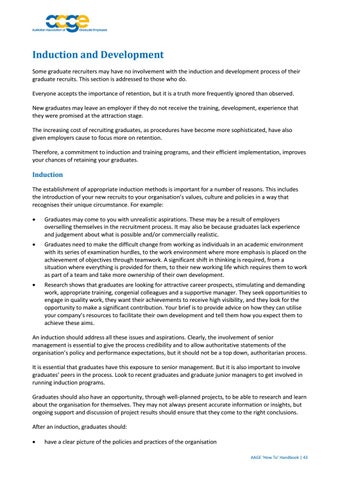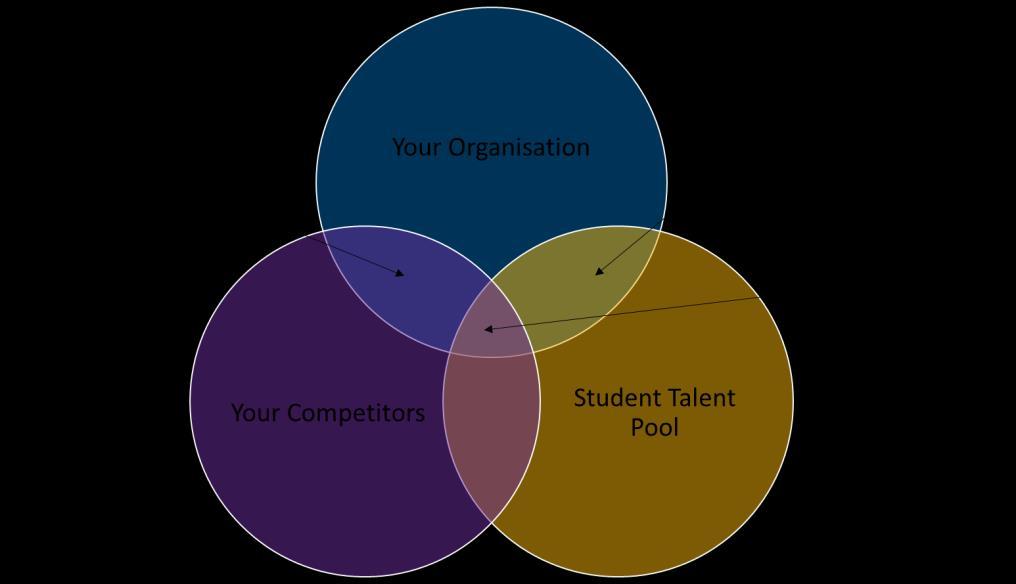Induction and Development Some graduate recruiters may have no involvement with the induction and development process of their graduate recruits. This section is addressed to those who do. Everyone accepts the importance of retention, but it is a truth more frequently ignored than observed. New graduates may leave an employer if they do not receive the training, development, experience that they were promised at the attraction stage. The increasing cost of recruiting graduates, as procedures have become more sophisticated, have also given employers cause to focus more on retention. Therefore, a commitment to induction and training programs, and their efficient implementation, improves your chances of retaining your graduates.
Induction The establishment of appropriate induction methods is important for a number of reasons. This includes the introduction of your new recruits to your organisation’s values, culture and policies in a way that recognises their unique circumstance. For example: •
Graduates may come to you with unrealistic aspirations. These may be a result of employers overselling themselves in the recruitment process. It may also be because graduates lack experience and judgement about what is possible and/or commercially realistic.
•
Graduates need to make the difficult change from working as individuals in an academic environment with its series of examination hurdles, to the work environment where more emphasis is placed on the achievement of objectives through teamwork. A significant shift in thinking is required, from a situation where everything is provided for them, to their new working life which requires them to work as part of a team and take more ownership of their own development.
•
Research shows that graduates are looking for attractive career prospects, stimulating and demanding work, appropriate training, congenial colleagues and a supportive manager. They seek opportunities to engage in quality work, they want their achievements to receive high visibility, and they look for the opportunity to make a significant contribution. Your brief is to provide advice on how they can utilise your company’s resources to facilitate their own development and tell them how you expect them to achieve these aims.
An induction should address all these issues and aspirations. Clearly, the involvement of senior management is essential to give the process credibility and to allow authoritative statements of the organisation’s policy and performance expectations, but it should not be a top down, authoritarian process. It is essential that graduates have this exposure to senior management. But it is also important to involve graduates’ peers in the process. Look to recent graduates and graduate junior managers to get involved in running induction programs. Graduates should also have an opportunity, through well-planned projects, to be able to research and learn about the organisation for themselves. They may not always present accurate information or insights, but ongoing support and discussion of project results should ensure that they come to the right conclusions. After an induction, graduates should: •
have a clear picture of the policies and practices of the organisation AAGE ‘How To’ Handbook | 43


